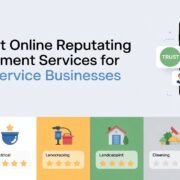VoIP and cloud communications are growing in utility; this means that protecting sensitive data requiring protection from interference has been elevated to even higher importance. VoIP and cloud franchises worldwide offer cheaper modes of communication that are fast and wily enough to run into different types/categories or vectors of cybersecurity threats such as eavesdropping, DDoS attacks, and data theft. Sometimes multi-faceted, securing communications is complicated, encompassing encryption, denial of access to unwanted intruders, some form of network surveillance, and legal restrictions.
Understanding VoIP and Cloud Communications Security Concerns
VoIP solutions and cloud communication software handling voice or data sent over the internet are particularly vulnerable to certain forms of cyber attacks such as eavesdropping and data capture: Calls over unsecured VoIP can be intercepted, exposing Top Secret conversations. Denial-of-Service and Distributed Denial-of-Service attacks: Here, the attackers use the overwhelming of the networks to deny the voice services, impacting later cloud applications. VoIP spoofing and fraud: The attackers exploit the loopholes, impersonating the legitimate user, causing damages financially and reputationally. Cloud Data Breach: Weak access control and misconfiguration of the cloud would allow unauthorized persons to gain access to sensitive business information.
Key Strategies for Improving VoIP and Cloud Security
There are preventive layers hospitals usually place against aggression. It is the safety mentioned above:
End-to-End Encryption
End-to-end encrypted voice such that it cannot be listened to by third parties because it passes through the secure Real-time Transport Protocol and the Transport Layer Security protocols in communication:
Authentication and Maintenance of Access Rights
For this, multi-factor authentication will be required for cloud and VoIP subscriptions, demanding extra security as the next level for limiting access through unauthorized entry. Access Rights would also be rolled out under Role Based Access Control (RBAC) in role-based rights so that entry would differ depending on user roles and responsibilities in the system.
Session Border Controller Installation
These are mushroom-shaped gateways of security that holistically guard themselves against the flow of unwanted traffic, possible fraud, denial of service attacks, and unauthorized access attempts—firewalling through which calls are forwarded.
Guidelines for Cloud Security
Regular Security Audits: This constant auditing reveals discrepancies in the organization’s security measures concerning cloud networking.
Data Encryption: This can probably be a bit wild as sensitive encryption will make the data unretrievable.
Zero Trust Security Model: This model requires all requests for access to be authenticated before they can be granted access, which consequently would prevent even an insider attack or any other unauthorized access attempts.
Threat Detection and Network Monitoring
Deploying Intrusion Detection/Prevention Systems (IDPS) aims to constantly monitor the stream in VoIP and cloud traffic for leading any suspicious activity in that direction to avert all probable cyber-criminal acts.
Secure VoIP Infrastructure With Firewalls and VPNs
Firewalls: VoIP-aware firewalls ensure that only legitimate voice traffic flows through the network.
VPNs—A Virtual Private Network: VPN-based protections are intended to add security to VoIP and cloud connections, especially when remote users access corporate communications infrastructures.
Policies and Regulations for Disposal
Institutions that collect clients’ sensitive data may think of other regulations such as GDPR, HIPAA, and PCI DSS. Regulations have quite a few ways of devising security models under which confidentiality of such confidential information is ensured, giving the institution some measure of defense against prosecution.
Conclusion
Voice calls and cloud communication can continue eternally, but they will still have to increase security against cyber-attack threats. Encryption, authenticated security network monitoring, and policy-based compliance afford the well-secured means of communication among organizations’ businesses safely and effectively. Today, VoIP and cloud security stand as the dual defining markers: technical requirements, investment in business interoperability, and customer confidence.
Do Read: TechInsiderz.com Gadgets: Best Picks, Reviews, and Future Trends













